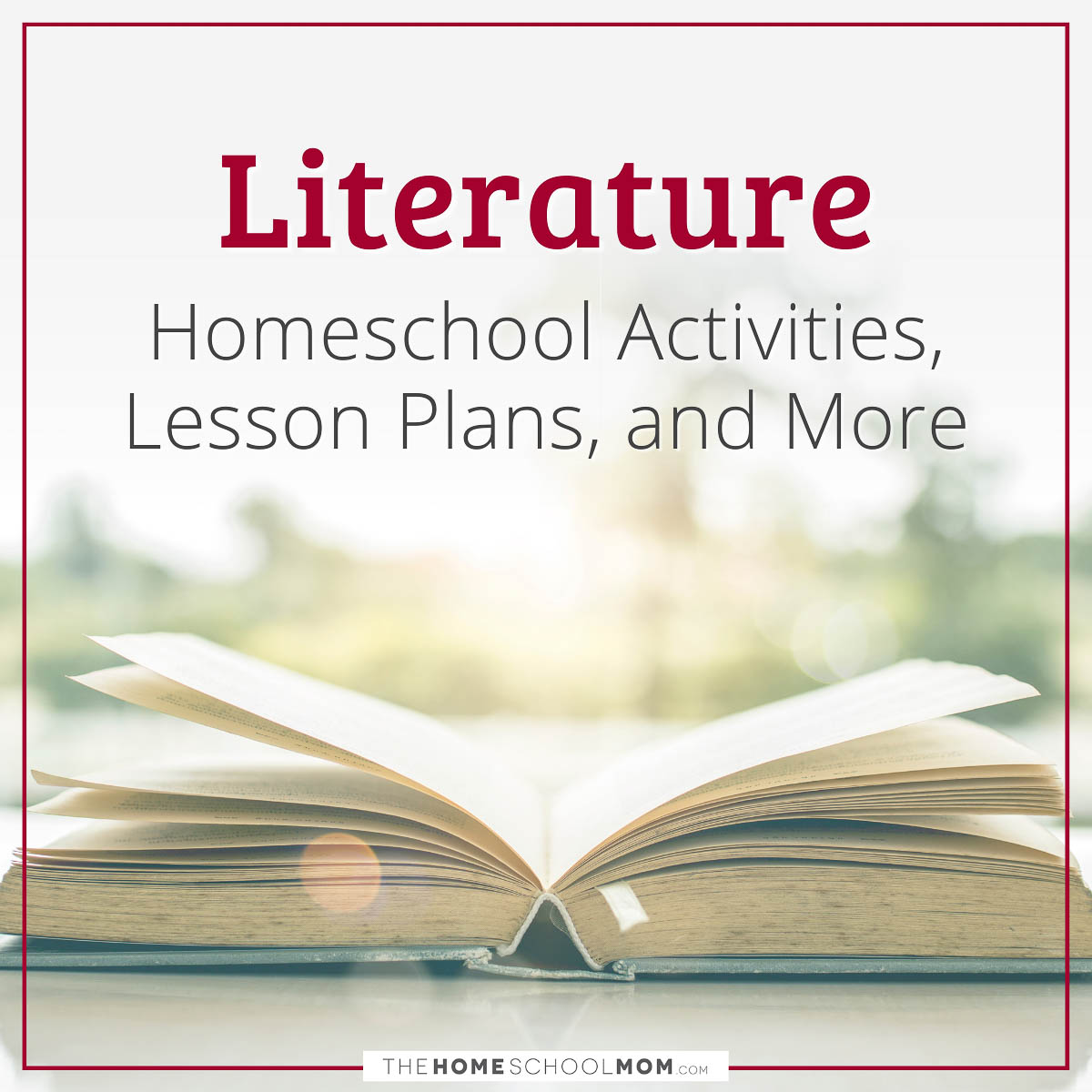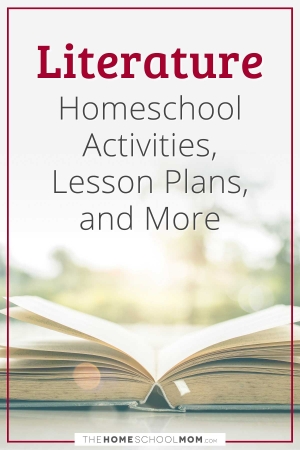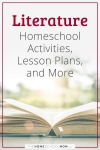- Y—Young (PreK-3rd)
- M—Middle (4th-6th)
- O—Older (7th-12th)
- T—Teacher Resources
Character Change: The Diary of Anne Frank
"In this interactive lesson supporting literacy skills, students examine what Anne Frank’s writing and a video dramatization of her diary reveal about her character and how it changed while she was in hiding. Students develop their literacy skills as they explore an English language arts focus on character change. During this process, they read informational text, learn and practice vocabulary words, and explore content through videos and interactive activities."

How to Love Lit Podcast
The How to Love Lit Podcast is deliberately designed to help parents, teachers, students and lifelong learners better understand great works of classical literature, from a traditional or classical perspective. Episodes explore the most commonly studied works taught at the high school level, including books such as the Scarlet Letter by Nathaniel Hawthorne and Fahrenheit 451 by Ray Bradbury. This resource is completely free and available to anyone with access to a podcast player or the internet. The website also has free teaching resources available.
A Web Companion to The Norton Anthology of English Literature
Explore English literature and culture with Norton Topics Online
How to Teach a Novel
This great resource from Keith Schoch, a New Jersey educator, will walk you through everything starting with choosing a great book.
Book titles to avoid - Native Americans
Despite the fine writing and exciting plots, many books about Indians foster continuations of classic blatant stereotypes. Recommended titles for reading as well as titles to avoid with explanations.
AmericanLiterature.com
Thousands of short stories are available on the site along with author biographies. You may search by title or author and there are also several dozen popular American novels in their entirety on the site. You'll also find poetry, study guides, and a Shakespeare collection. Stories and materials range from PreK-12.
It Doesn't Have to End That Way: Using Prediction Strategies with Literature
Grades K-2 from ReadWriteThink, International Reading Association and the National Council of Teachers of English. After listening to the beginning of a story, students use details in the text, personal experience, and prior knowledge to predict the way the story will end. Includes lesson plans and additional resources for further study.
Why & How I Teach with Historical Fiction
Why one teacher uses historical fiction in the classroom, tips for choosing good historical fiction, and strategies for helping students differentiate between fact and fiction (Scholastic article by Tarry Lindquist)
Inferring How and Why Characters Change
Grades 3-5 from ReadWriteThink, International Reading Association and the National Council of Teachers of English.
Literature unit studies and lapbooks
Homeschool Share is a small website that offers almost 100 literature-based unit studies, mostly for younger students.The site also includes links to resources to be used for FIAR (Five in a Row) units. Those of you who enjoy creating lapbooks will like this site.
Web English Teacher
This site has a plethora of free lesson plans, but it can take some time to navigate. Some categories have straightforward link lists, but the three Lit categories (children's, YA, and prose) are listed by alphabetical order using the last name of the lesson plan creator, rather than the name of the work or the author. So if you have a lot of time or you just like to spin the wheel and see what happens, this is a great site for you.
A Book In Time - Timeline of Historical Fiction and Nonfiction
The Ultimate History Booklist! A Book In Time is a recommended reading list for history, including fiction and non-fiction books, which are listed by time period.
Literature for Kids
Travel for Kids includes book suggestions for every country, state, city they list. Use their well-organized list under Fun Things To Do do drill down to locations, then scroll down to find the book recommendations for learning about each area.
Teachers' Guide to Follow the Drinking Gourd
"Follow the Drinking Gourd", a song published in 1928 by H.B. Parks, encodes instructions for enslaved peoples to escape to freedom using the Underground Railroad. This site contains lyric meanings, astronomy information and activities, and worksheets for elementary, middle school, and high school students. You can use this as a study on historical writing and creative license because the rewritten version was featured in Jeanette Winter's Follow the Drinking Gourd, Bernardine Connelly's book of the same name, and F.N. Monjo's The Drinking Gourd, but the enslaved people in these books would not have been singing the lyrics that wouldn't be written for another 80 years.
Aesop and Ananse: Animal Fables and Trickster Tales
Grades K-5 from EDSITEment. In this unit, students will become familiar with fables and trickster tales from different cultural traditions and will see how stories change when transferred orally between generations and cultures.
Harvard's Geoffrey Chaucer Website
This site provides a wide range of glossed Middle English texts and translations of analogues relevant to Chaucer's works, as well as selections from relevant works by earlier and later writers, critical articles from a variety of perspectives, graphics, and general information on life in the Middle Ages.
Uncle Tom's Cabin and American Culture
This site from the University of Virginia presents texts related to Uncle Tom's Cabin both prior to its writing and after its publication, including the text of the book itself.
English Literature Study Guide:The Lion, The Witch, and The Wardrobe
Free online study guides by SparkNotes.
Free educator guide for The Lion, The Witch, and The Wardrobe
Designed for students ages 8-12
Knowing Poe
The complete guide to learning Edgar Allan Poe. The site contains biographical information, poems and stories, a collection of primary resources, and lesson plans.




